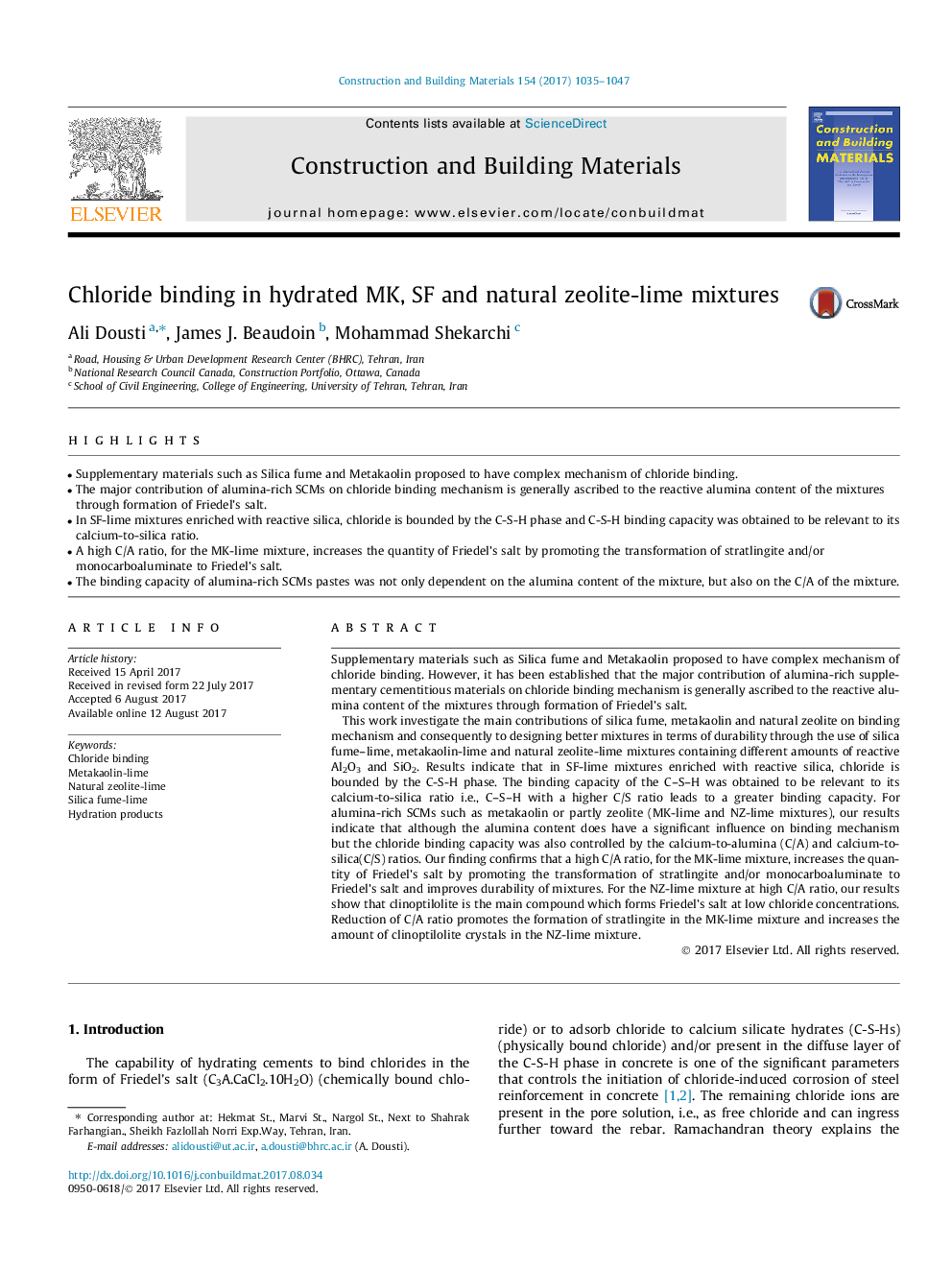| Article ID | Journal | Published Year | Pages | File Type |
|---|---|---|---|---|
| 6480255 | Construction and Building Materials | 2017 | 13 Pages |
â¢Supplementary materials such as Silica fume and Metakaolin proposed to have complex mechanism of chloride binding.â¢The major contribution of alumina-rich SCMs on chloride binding mechanism is generally ascribed to the reactive alumina content of the mixtures through formation of Friedel's salt.â¢In SF-lime mixtures enriched with reactive silica, chloride is bounded by the C-S-H phase and C-S-H binding capacity was obtained to be relevant to its calcium-to-silica ratio.â¢A high C/A ratio, for the MK-lime mixture, increases the quantity of Friedel's salt by promoting the transformation of stratlingite and/or monocarboaluminate to Friedel's salt.â¢The binding capacity of alumina-rich SCMs pastes was not only dependent on the alumina content of the mixture, but also on the C/A of the mixture.
Supplementary materials such as Silica fume and Metakaolin proposed to have complex mechanism of chloride binding. However, it has been established that the major contribution of alumina-rich supplementary cementitious materials on chloride binding mechanism is generally ascribed to the reactive alumina content of the mixtures through formation of Friedel's salt.This work investigate the main contributions of silica fume, metakaolin and natural zeolite on binding mechanism and consequently to designing better mixtures in terms of durability through the use of silica fume-lime, metakaolin-lime and natural zeolite-lime mixtures containing different amounts of reactive Al2O3 and SiO2. Results indicate that in SF-lime mixtures enriched with reactive silica, chloride is bounded by the C-S-H phase. The binding capacity of the C-S-H was obtained to be relevant to its calcium-to-silica ratio i.e., C-S-H with a higher C/S ratio leads to a greater binding capacity. For alumina-rich SCMs such as metakaolin or partly zeolite (MK-lime and NZ-lime mixtures), our results indicate that although the alumina content does have a significant influence on binding mechanism but the chloride binding capacity was also controlled by the calcium-to-alumina (C/A) and calcium-to-silica(C/S) ratios. Our finding confirms that a high C/A ratio, for the MK-lime mixture, increases the quantity of Friedel's salt by promoting the transformation of stratlingite and/or monocarboaluminate to Friedel's salt and improves durability of mixtures. For the NZ-lime mixture at high C/A ratio, our results show that clinoptilolite is the main compound which forms Friedel's salt at low chloride concentrations. Reduction of C/A ratio promotes the formation of stratlingite in the MK-lime mixture and increases the amount of clinoptilolite crystals in the NZ-lime mixture.
